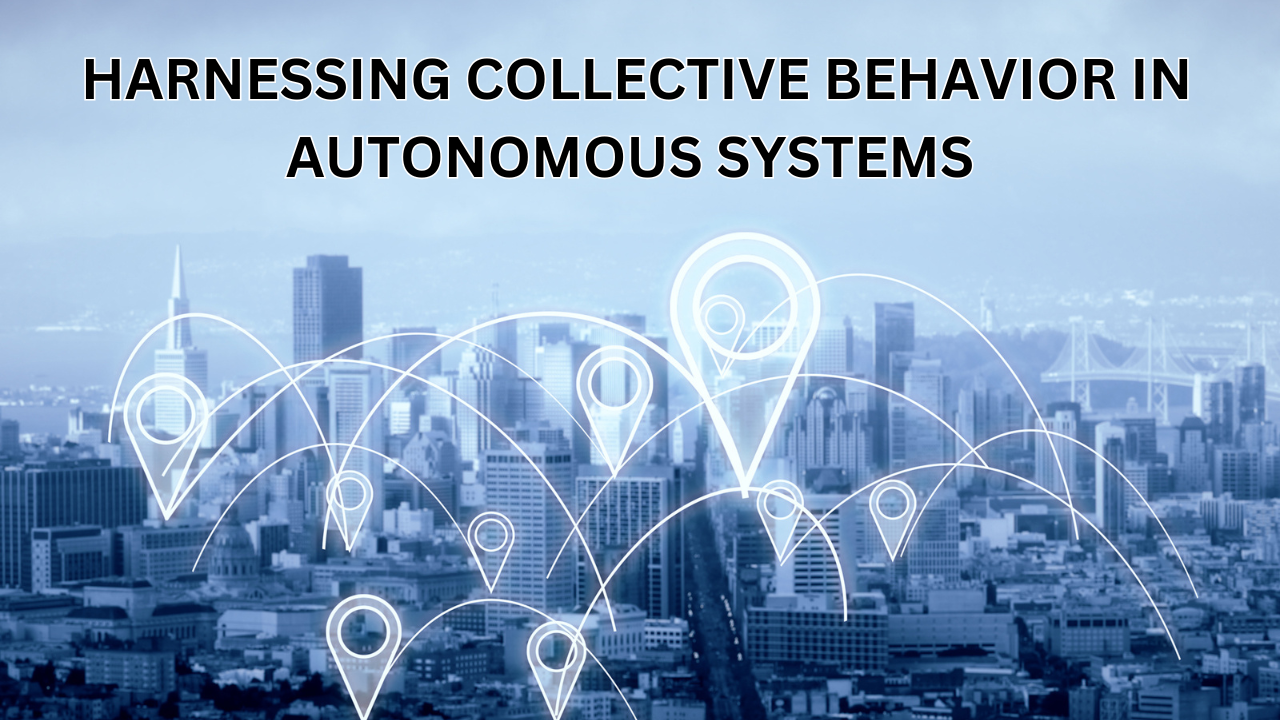Harnessing collective behavior in autonomous systems offers a transformative approach to problem-solving by mimicking the self-organizing principles found in nature from the synchronized movement of bird flocks to the cooperative foraging strategies of ants collective behavior demonstrates how simple individual actions can yield complex and efficient outcomes at scale translating these principles into autonomous systems allows for enhanced adaptability resilience and scalability in fields such as robotics traffic management and environmental monitoring by enabling multiple autonomous agents to collaborate without centralized control these systems can efficiently tackle tasks that are too complex or dynamic for a single agent to manage alone.
The potential applications are vast ranging from swarm robotics for search-and-rescue missions to decentralized networks for optimizing urban infrastructure achieving this level of coordination requires addressing challenges such as communication constraints decision-making under uncertainty and the prevention of emergent failures understanding and designing these systems demands an interdisciplinary approach to blending insights from biology, computer science, and engineering as autonomous systems become increasingly integrated into society the ability to harness collective behavior not only enhances functionality but also opens new frontiers in innovation where machines can learn and adapt collectively to solve real-world challenges.
Types of Collective Behavior:
Collective behavior can be categorized into various types based on the underlying mechanisms and goals driving group interactions one common type is cooperative behavior where individuals work together to achieve a shared objective such as robots collaborating to build structures or drones coordinating to map a disaster zone another type is competitive behavior where agents vie for limited resources or dominance as seen in market simulations or game-theoretic models synchronistic another form of collective behavior occurs when individuals align their actions in time like fireflies flashing in unison or autonomous vehicles maintaining traffic flow.
Flowing and swarming are also key types where agents follow simple rules of alignment separation, and cohesion resulting in organized group movements applicable in search-and-rescue missions or crowd simulations involve indirect coordination through environmental cues as seen in ant trails guiding foraging patterns and are used in task allocation and resource management each type of collective behavior showcases how decentralized systems can achieve complex outcomes with applications spanning robotics, artificial intelligence.
Applications of Collective Behavior in Autonomous Systems:
The applications of collective behavior in autonomous systems are vast and hold immense potential across various industries in robotics swarm intelligence is applied to create fleets of small low-cost robots that can collaborate to perform complex tasks such as environmental monitoring, agricultural harvesting, or disaster response these robots work in unison the collective behavior of ants or bees, allowing for efficiency, scalability, and resilience in autonomous vehicles collective behavior can optimize traffic flow and reduce congestion by enabling cars to communicate and make real-time decisions as a cohesive unit improving safety and fuel efficiency drones equipped with collective behavior algorithms are increasingly used for large-scale surveying and precision agriculture.
In the field of smart cities collective behavior principles help manage decentralized systems like energy grids waste management, and transportation ensuring that resources are used efficiently and systems remain adaptable collective behavior is key in networked systems where it supports robust and fault-tolerant communication between distributed agents making these systems more reliable and capable of handling unexpected disruptions as autonomous systems evolve the ability to harness collective behavior will continue to unlock new opportunities making these systems more intelligent efficient and capable of addressing real-world challenges.
Flocking Behavior:
Flocking behavior is a fascinating example of collective action where individuals follow simple rules to create organized and coordinated movements within a group this behavior is commonly observed in birds fish, and insects and occurs when each member of the group aligns its direction with nearby individuals maintain a safe distance from others and moves toward the center of the group in autonomous systems these principles are applied to create coordinated teams of robots or drones that can work together seamlessly without centralized control.
The advantage of flocking behavior is its ability to enable large groups of agents to respond quickly to changing conditions avoid collisions and optimize their movement in complex environments for example, in search-and-rescue operations swarm robots can quickly adapt to obstacles reconfigure their paths, and cover large areas efficiently in autonomous vehicles or drones flocking algorithms help maintain safe distances avoid traffic congestion, and ensure smooth coordination the beauty of flocking lies in its simplicity by following a few basic rules large groups of agents can exhibit sophisticated emergent behaviors that allow them to tackle tasks that would be difficult or impossible for a single agent to handle alone.
Self-Organization:
Self-organization refers to the process through which a system spontaneously develops a structured and coordinated state without external direction or control in nature self-organization is seen in phenomena like the formation of snowflakes the flocking of birds or the behavior of ant colonies where individual elements follow simple local rules that lead to complex global patterns in the context of autonomous systems self-organization allows agents to autonomously coordinate their actions adapt to environmental changes and achieve collective goals without requiring a central controller.
Robots can independently navigate and collaborate with others to complete tasks like mapping or surveillance adjusting their behavior based on local interactions in traffic management systems self-organizing algorithms can dynamically adjust vehicle flows to reduce congestion without the need for centralized traffic signals the power of self-organization lies in its ability to foster efficient adaptive behavior that is robust to disruptions and capable of scaling to large numbers of agents making it a key principle in the design of resilient autonomous systems.
